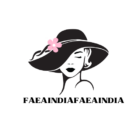Dragons, mythical creatures of fire and lore, have captivated the human imagination for centuries. Their fierce beauty and intricate designs make them an affordable and friendly subject for artists of all skill levels. But how does one go about capturing the essence of these legendary beasts on paper?
drawing:ivdesogocuy= dragon
Understanding Dragon Anatomy

Significant strides in mastering drawing dragons pivot around a solid understanding of the creature’s anatomy and the capability to adapt your own unique look in today’s style scene. Carefully scrutinizing these focal points could elevate your dragon drawings, making them stand head and tail above the rest.
Learning the anatomy of a dragon remains an essential phase in creating a convincing representation. Although these mythical beasts don’t exist in our physical world, their descriptions span various legends and mythologies. It gives an indication that dragons borrow features from existing animals such as birds, bats, and reptiles – ideal reference points for artists. For instance, an artist can study bat wings as a guidance for dragon wings, or reptile scales to depict dragon skin.
Selecting Your Art Style
Art style selection is another crucial factor in drawing dragon. Embrace the freedom to explore as there are diverse genres in art, from realism to fantasy. So, whether you lean towards the complex detailing seen in photorealistic illustrations, or you have a penchant for the exaggerated features common in cartoon and comic art, the choice is yours. It’s important, however, to ensure your chosen style aligns with the overall mood of your image, enhancing the dragon’s persona in the process.
Tools and Materials for Dragon Drawing
Following the paths laid by anatomy study and artistic style choice, the next step is to ascertain the tools suitable for drawing dragon. Materials, traditional or digital, pave the way for the accomplishment of the elegantly sketched dragons, from pencil lines to digital pixels.
Traditional Drawing Tools

In the realm of traditional drawing, three tools dominate: pencils, paper, and erasers.
- Pencils, specifically, include two key types: sketching and coloring pencils. Sketching pencils, for instance, range from 4H for light shades to 6B, the go-to for dark ones. Conversely, coloring pencils introduce a realm of hues, ideal for dragons that transcend monochromic reality.
- Paper used in drawing dragon comes in various weights, textures, and sizes. Heavy paper like Bristol board supports the perseverance of intricate drawing dragon designs. Similarly, sketch pads and drawing books with spiral bindings offer versatility for spontaneous drawing sessions.
- Erasers do more than eliminate mistakes; they contribute to lighting effects. Gum erasers, for example, result in soft changes for subtle gradients, while plastic erasers create absolute erasures, essential for sharp highlights.
Digital Drawing Software

Shifting gears to digital drawing dragon, two main components dictate: Software and graphics tablets.
- Software programs such as Adobe Photoshop or Illustrator, Corel Painter, and Autodesk Sketchbook offer a plethora of tools and settings that cater to precision and ‘undo’ options unattainable in traditional mediums. Procreate, an app available for iPad users, mirrors the physical act of drawing on the tablet screen, making an artist’s switch from traditional to digital smoother.
- Graphic tablets introduce an interactive canvas, translating strokes from the handheld stylus to the digital screen. Wacom tablets, popular amongst digital artists, provide sensitivity adjustments and tilt recognition, both of which elevate the drawing process, emulating the fluidity of traditional dragon sketching. Therefore, the choice of digital tools depends upon the artist’s comfortability and adaptability with technology.
Imagination and Skill
Drawing dragon is an exciting endeavor that combines imagination and skill. It’s an art form that demands an understanding of mythical creature anatomy and a mastery of the tools at hand. Whether you’re sketching with a pencil on paper or digitally painting on a Wacom tablet, each tool opens up new possibilities for artistic expression. Remember, the choice of tools isn’t just about convenience, it’s about how they can help bring your dragon to life. As we’ve learned, there’s no one-size-fits-all approach to creating these awe-inspiring creatures.

